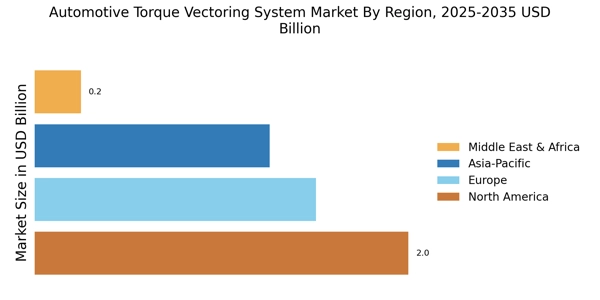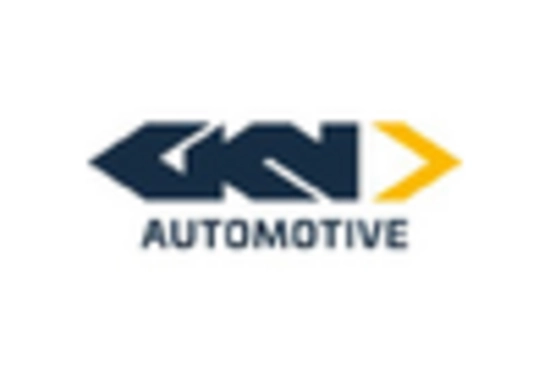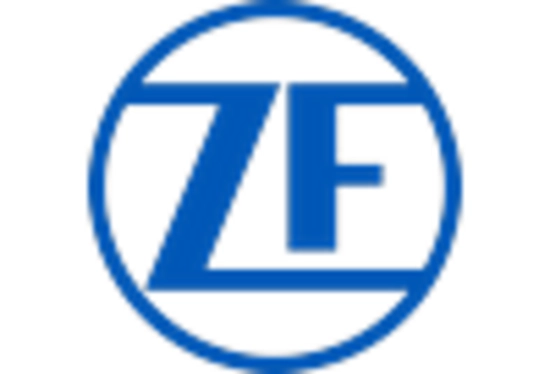Rising Focus on Fuel Efficiency
In the Automotive Torque Vectoring System Market, the emphasis on fuel efficiency is becoming more pronounced. Torque vectoring systems contribute to improved fuel economy by optimizing power distribution and reducing energy loss during vehicle operation. As regulatory bodies implement stricter fuel efficiency standards, manufacturers are compelled to adopt technologies that enhance performance while minimizing fuel consumption. Reports suggest that vehicles equipped with torque vectoring systems can achieve up to 15% better fuel efficiency compared to traditional systems. This growing focus on sustainability and efficiency is likely to propel the market for torque vectoring systems in the automotive industry.
Growing Demand for Performance Vehicles
The Automotive Torque Vectoring System Market is experiencing a surge in demand for performance-oriented vehicles. As consumers increasingly seek enhanced driving experiences, manufacturers are integrating torque vectoring systems to improve handling and stability. This technology allows for precise distribution of torque to individual wheels, enhancing traction and cornering capabilities. According to recent data, the performance vehicle segment is projected to grow at a compound annual growth rate of over 8% through the next five years. This trend indicates a shift in consumer preferences towards vehicles that offer superior performance, thereby driving the adoption of torque vectoring systems in the automotive sector.
Advancements in Vehicle Dynamics Control
The Automotive Torque Vectoring System Market is benefiting from significant advancements in vehicle dynamics control technologies. These innovations enable more sophisticated algorithms for torque distribution, enhancing vehicle stability and performance under various driving conditions. The integration of real-time data processing and machine learning techniques allows for adaptive torque vectoring, which can respond to changing road conditions and driver inputs. As a result, the market is witnessing an increase in the adoption of these advanced systems, with projections indicating a potential market growth of 10% annually over the next decade. This trend underscores the importance of technological evolution in driving the torque vectoring market.
Increased Investment in Research and Development
Investment in research and development within the Automotive Torque Vectoring System Market is on the rise, as manufacturers strive to innovate and enhance their product offerings. Companies are allocating substantial resources to develop next-generation torque vectoring systems that offer improved performance, reliability, and integration with other vehicle technologies. This trend is supported by the growing competition among automotive manufacturers to differentiate their products in a crowded market. Data indicates that R&D spending in the automotive sector is expected to increase by approximately 5% annually, which could lead to breakthroughs in torque vectoring technology and further drive market growth.
Expansion of Electric and Hybrid Vehicle Segments
The Automotive Torque Vectoring System Market is poised for growth due to the expansion of electric and hybrid vehicle segments. As these vehicles gain popularity, the demand for advanced driveline technologies, including torque vectoring systems, is expected to rise. Torque vectoring enhances the performance of electric and hybrid vehicles by providing better control and efficiency, which is crucial for maximizing the benefits of electric powertrains. Market analysis suggests that the electric vehicle segment alone could account for over 30% of the torque vectoring market by 2030. This shift towards electrification is likely to be a key driver for the adoption of torque vectoring systems in the automotive industry.


















Leave a Comment